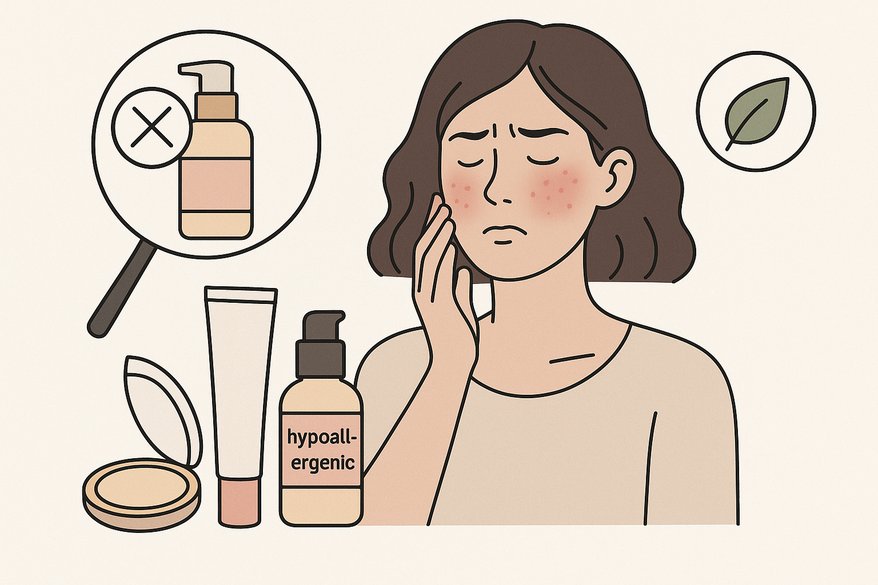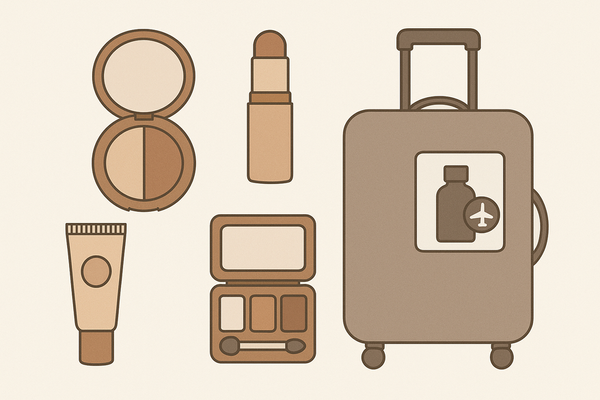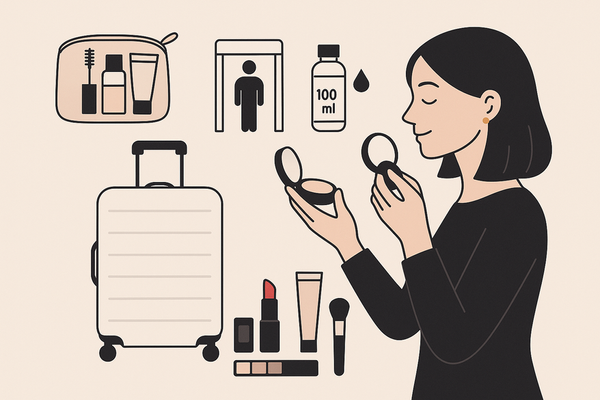Zero-Irritation Cosmetics: Your Guide to Makeup Without Allergies
Discover zero-irritation cosmetics and reduce makeup-related allergies. Learn about hypoallergenic products and how to choose safe makeup for sensitive skin.

Estimated reading time: 8 minutes
Key Takeaways
- Zero-irritation cosmetics eliminate common triggers—fragrances, preservatives, synthetic dyes—to protect sensitive skin.
- Clinical testing and labels like hypoallergenic, non-comedogenic, and dermatologist-tested ensure safety.
- Learn to decode labels, perform at-home patch tests, and use AI tools for personalized skincare peace of mind.
Table of Contents
- Understanding Makeup-Related Allergies and Irritation
- The Science Behind Zero-Irritation Cosmetics
- How to Identify and Select Zero-Irritation Cosmetics
- Try AI-Powered Ingredient Analysis
- Benefits of Choosing Zero-Irritation Cosmetics
- Consumer and Expert Insights
- Best Practices for Preventing Makeup-Related Irritations
- Conclusion
Understanding Makeup-Related Allergies and Irritation
Contact dermatitis occurs when allergens breach a weakened skin barrier, triggering redness, itching, and swelling. For gentle product picks, consult Makeup Tips for Sensitive Skin: Safe Solutions for Acne-Prone Complexions.
Common Allergens and Irritants
- Fragrances – top cause of redness and itching.
- Preservatives – parabens and formaldehyde releasers can trigger hormonal disruption.
- Synthetic dyes – heighten inflammation and sensitivity.
How Irritants Work
- Barrier Disruption: Harsh ingredients weaken the skin’s outer layer.
- Allergen Entry: Damaged barrier lets irritants slip in.
- Immune Activation: Langerhans cells summon inflammation, causing dermatitis.
The Science Behind Zero-Irritation Cosmetics
Key Formulation Terms
- Hypoallergenic – unlikely to cause allergies.
- Non-comedogenic – won’t clog pores or provoke acne.
- Dermatologist-tested – clinically evaluated on sensitive skin.
Formulation Process
- Ingredient Selection – exclude parabens, sulfates, synthetic fragrances, dyes.
- Gentle Actives Included – plant oils (jojoba, sunflower), barrier-repair peptides, niacinamide.
- Patch Testing Protocol – 48-hour small-cohort test; monitor for redness, itching, swelling.
Clinical Data Use
Manufacturers refine formulas based on volunteer feedback to achieve a true “zero-irritation” status.
How to Identify and Select Zero-Irritation Cosmetics
Choosing gentle makeup starts at the label; become an ingredient detective.
Label-Reading Checklist
- Avoid: synthetic fragrances, parabens, sulfates, artificial dyes.
- Seek: “hypoallergenic,” “non-comedogenic,” “fragrance-free,” “dermatologist-tested.”
Trustworthy Certifications
- Allergy UK Seal
- National Eczema Association Acceptance Seal
At-Home Patch-Test Protocol
- Apply a pea-sized amount to inner forearm or behind the ear.
- Cover and wait 24–48 hours.
- Check for redness, itching, or swelling before full-face application.
Recommended Brands
100% Pure – transparent ingredients, certified natural colors, proven for sensitive skin.
Try AI-Powered Ingredient Analysis
For a lightning-fast safety check, use Makeup Check AI, which flags sensitizing ingredients in seconds:
Benefits of Choosing Zero-Irritation Cosmetics
- Improved Skin Health
• Fewer allergic reactions and breakouts.
• Stronger barrier and reduced chronic redness. - Enhanced Makeup Experience
• Lightweight, breathable textures.
• Long-lasting wear without discomfort. - Long-Term Safety
• Lower cumulative exposure to harsh chemicals.
Consumer and Expert Insights
User Testimonials
“I switched to zero-irritation cosmetics and my redness vanished within a week.”
“My eczema flares decreased by 80% after using fragrance-free foundation.”
Dermatologist Endorsements
“Fragrance-free, hypoallergenic products are first-line for patients with chronic irritation.”
– Dr. Jane Doe, Board-Certified Dermatologist
Best Practices for Preventing Makeup-Related Irritations
A thoughtful routine keeps skin calm and protected.
Daily Skincare Routine
- Gentle Cleansing: sulfate-free, pH-balanced washes.
- Consistent Moisturizing: oil-free, barrier-repair creams.
- Weekly Mask or Mild Exfoliation: non-abrasive, low-acid formulas.
Lifestyle & Environmental Tips
- Sun Protection: mineral SPF instead of chemical sunscreens.
- Stress Management: reduce cortisol spikes that heighten sensitivity.
- Pollution Defense: apply antioxidant-rich serums to neutralize free radicals.
Conclusion
Zero-irritation cosmetics play a crucial role in preventing makeup-related allergies and irritation. Audit your makeup stash today—prioritize ingredient transparency, seek certified hypoallergenic labels, and always patch-test new launches. Additionally, explore 7 Essential Allergy-Friendly Makeup Tips to Prevent Irritation for quick, actionable advice.
FAQ
- What makes a cosmetic “zero-irritation”?
It omits known sensitizers—fragrances, certain preservatives, dyes—and undergoes patch testing to confirm skin compatibility. - How do I perform a proper patch test?
Apply a small amount on your inner forearm or behind the ear, cover it, and wait 24–48 hours for any reaction before full-face use. - Are zero-irritation products safe for acne-prone skin?
Yes—most are non-comedogenic and designed to support a healthy skin barrier without clogging pores. - Can I trust hypoallergenic labels?
Look for additional seals—like Allergy UK or the National Eczema Association—to back up the claim with certified testing.




